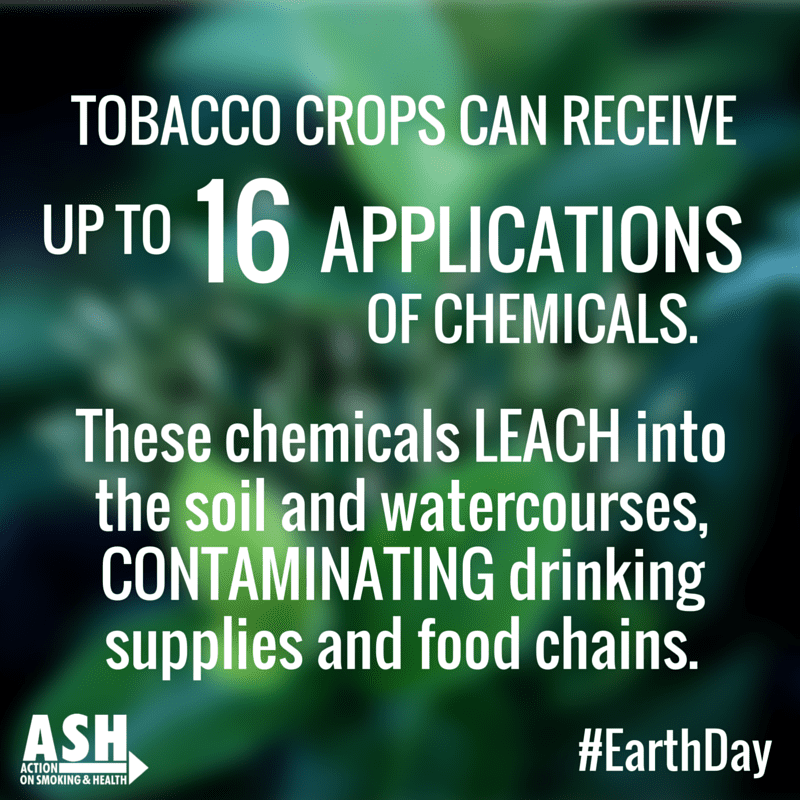The harmful impacts of smoking go well beyond each individual smoker. Cigarettes have a negative impact on the environment throughout their entire life cycle – from  growing the tobacco to disposing of the butts. ASH blogs have highlighted several of the environmental harms of tobacco, including cigarette butt pollution. In honor of Earth Day 2016, we are highlighting the devastating effects that tobacco farming, curing, and manufacturing have on the environment.
growing the tobacco to disposing of the butts. ASH blogs have highlighted several of the environmental harms of tobacco, including cigarette butt pollution. In honor of Earth Day 2016, we are highlighting the devastating effects that tobacco farming, curing, and manufacturing have on the environment.
Pesticides and fertilizers
Tobacco is a difficult plant to grow, and therefore growers rely on pesticides to protect the plants from insects and disease, and they rely on large amounts of inorganic fertilizers. Some tobacco crops receive up to sixteen applications of chemicals. These chemicals harm birds and other small animals, decrease soil fertility, and in some cases, cause ozone depletion. Tobacco workers, who are unfortunately often children, are also exposed to these toxic chemicals. The chemicals leach into the soil and watercourses, contaminating drinking supplies and food chains.
According to the General Accounting Office, every year an estimated 27 million pounds of pesticides are sprayed onto tobacco fields in the United States, and tobacco ranks sixth among all agriculture in the amount of pesticides applied per acre.
Deforestation
In many developing countries, wood is burned to cure tobacco leaves (in order to dry the leaves before they are transported) and to construct curing barns. An estimated 200,000 hectares of forests and woodlands are cut down each year because of tobacco farming – 5% of global deforestation. This has been a problem particularly in Africa, where tobacco is often cured by smoke. The country of Malawi devotes more than 5% of its farming land to tobacco, and its deforestation rate is the fourth fastest in the world. Read more here>.
Pollution from manufacturing and packaging
The manufacturing of tobacco products also produces an immense amount of waste. In 1995, the global tobacco industry produced an estimated 2.3 billion kilograms of manufacturing waste and 209 million kilograms of chemical waste.
According to one expert, in the United States alone, “eliminating [the production of] cigarettes would yield carbon savings equivalent to raising the fuel efficiency of all cars and trucks by several miles per gallon-or to converting the entire electrical grid of a state like Massachusetts to solar power.”
Over the past century, ten trillion packs of cigarettes have been smoked. As each empty pack weighs about five grams, that adds up to about 110 billion pounds of packaging waste-including paper, ink, cellophane, foil, and glue. This does not include the enormous amount of litter caused by cigarette butts, which are not bio-degradable. Read ASH’s blog about cigarette butt pollution here>.
The bottom line? Tobacco is bad for your body and bad for the environment.
This Earth Day, help inform others about the unforeseen environmental harms of tobacco by sharing this blog. Engage with us on twitter (@ASHorg) or Facebook to continue the discussion using #EarthDay